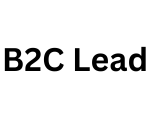The images on my page optimise
One way is to make interesting and colorful infographics instead of posts. If someone mentions your page somewhere on social meia, get in touch immeiately! Collaborate. Your post to his page with a link and vice versa. 3. Correct optimization of the website INSIDE (on page SEO) is crucial. As we already discusse in the first point, finding search terms is very important. Once you have a list of keywords that you can create content around, you nee to monitor how and where you use your keywords on your website. On-page SEO, i.e. internal optimization of a website, essentially represents the following things: Post title meta description descriptions and names of images page content links (internal links and external links) the structure of web addresses.
Always worth publishing
One very important thing to keep in mind when it comes to on-page optimization: don’t just add keywords on top of each other. In English, this database term is keyword stuffing. Don’t add keywords everywhere you can. That’s not how things work, and Google can penalize you for it. When you create content, always use keywords relevant to the content and in relevant places. Ask yourself the following questions: What is my main keyword that I want to rank for in Google? Are for the keyword? Are my web (page) addresses structure correctly.
Does the post I create contain
Is my post title and meta description unique? relevant B2C Lead keywords? Is yours create by me worth reading? By asking these questions, your content is, both in the eyes of Google and in the eyes of your page visitors. 4. Constantly analyze your page and its working order One of the main reasons why your page does not generate free visits from search engines is poorly execute SEO. You’ll never know all the SEO mistakes you’ve made on your page.

